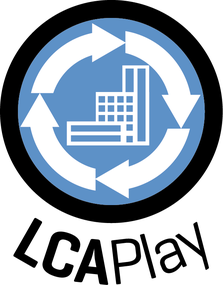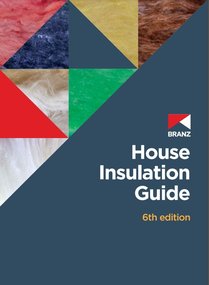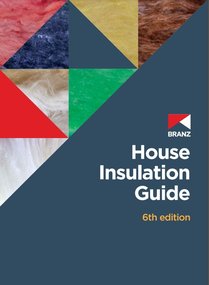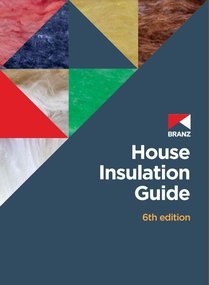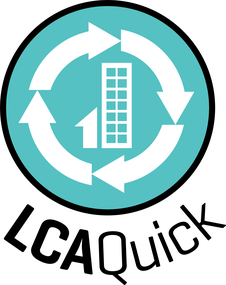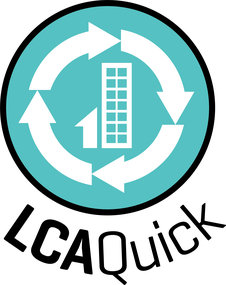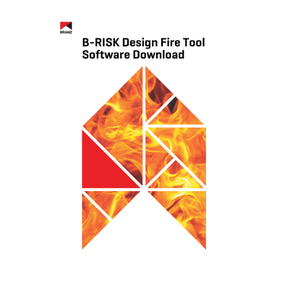LCAPlay V2.0 (February 2024)
Use LCAPlay to evaluate the potential greenhouse gas emissions (and other environmental impacts) of alternative building options.
BRANZ House Insulation Guide 6th edition V2.1 ONLINE (November 2023)
This XLXS [25MB] download of BRANZ House Insulation Guide 6th edition is for PC and MAC users of Microsoft 365 [ONLINE]
New Features:
- A helpful “Door” sheet for determining the R-value of doors (leaf and frame) based on the R-value and size of the door leaf and the material of the frame. This does not include sliding doors.
- A frame fraction estimator to the “Wall” sheet. This addition is experimental and still under development. Addtional option to note the source of the frame fraction value. That source may be for instance the frame & truss supplier, or it may have been estimated from the plans.
- Data entry summary at the top of each of the sheets. The completed sheet can be reproduced using this character string.
Other version updates:
- Repaired an error with the “Roofs” sheet where the R-value included the effects of an R1.2 secondary insulation layer, even when that option wasn’t selected. It only applied to the case where the joist height was 290mm.
- Improved appearance of the “Roof edge” sheet.
The guide is now in two parts:
- The tables of construction R-values for common construction options for compliance under H1/AS1 and H1/VM1 5th edition
- The accompanying House Insulation Guide text [PDF] for guidance on insulation to meet or exceed H1 AS/1 and H1/VM1 5th edition.
Once you have downloaded this version open it using Excel on Microsoft 365
BRANZ House Insulation Guide 6th edition V2.1 MAC (November 2023)
This XLXS [25MB] download of BRANZ House Insulation Guide 6th edition is for MAC users.
New Features:
- A helpful “Door” sheet for determining the R-value of doors (leaf and frame) based on the R-value and size of the door leaf and the material of the frame. This does not include sliding doors.
- A frame fraction estimator to the “Wall” sheet. This addition is experimental and still under development. Addtional option to note the source of the frame fraction value. That source may be for instance the frame & truss supplier, or it may have been estimated from the plans.
- Data entry summary at the top of each of the sheets. The completed sheet can be reproduced using this character string.
Other verion updates:
- Repaired an error with the “Roofs” sheet where the R-value included the effects of an R1.2 secondary insulation layer, even when that option wasn’t selected. It only applied to the case where the joist height was 290mm.
- Improved appearance of the “Roof edge” sheet.
The guide is now in two parts:
- The tables of construction R-values for common construction options for compliance under H1/AS1 and H1/VM1 5th edition
- The accompanying House Insulation Guide text [PDF] for guidance on insulation to meet or exceed H1 AS/1 and H1/VM1 5th edition.
BRANZ House Insulation Guide 6th edition V2.1 PC (November 2023)
This XLXS [25MB] download of BRANZ House Insulation Guide 6th edition is for PC users.
New Features:
- A helpful “Door” sheet for determining the R-value of doors (leaf and frame) based on the R-value and size of the door leaf and the material of the frame. This does not include sliding doors.
- A frame fraction estimator to the “Wall” sheet. This addition is experimental and still under development. Addtional option to note the source of the frame fraction value. That source may be for instance the frame & truss supplier, or it may have been estimated from the plans.
- Data entry summary at the top of each of the sheets. The completed sheet can be reproduced using this character string.
Other version updates:
- Repaired an error with the “Roofs” sheet where the R-value included the effects of an R1.2 secondary insulation layer, even when that option wasn’t selected. It only applied to the case where the joist height was 290mm.
- Improved appearance of the “Roof edge” sheet.
The guide is now in two parts:
- The tables of construction R-values for common construction options for compliance under H1/AS1 and H1/VM1 5th edition
- The accompanying House Insulation Guide text [PDF] for guidance on insulation to meet or exceed H1 AS/1 and H1/VM1 5th edition.
CO₂NSTRUCT v3 (June 2023)
CO₂NSTRUCT provides embodied carbon and energy values for building materials, including concrete, glass, timber and metals, as well as products such as bathroom and kitchen fittings and lifts.
Embodied carbon is the amount of greenhouse gases, expressed as carbon dioxide equivalents, required to produce a material. Embodied energy is the amount of energy consumed to extract, refine, process, transport and fabricate a material or product (including buildings). This is provided as a total and divided into energy from non-renewable and renewable sources.
LCAQuickV3.6 (June 2023)
This is the full working version of LCAQuick, which calculates environmental impacts based on the data you enter. If you wish, you can use LCAQuickV3.6 Data Entry initially to sort and enter your data.
This version of LCAQuick is a 40 MB file, so it is best to use it on a reasonably powerful computer. Due to the size of the file and the numbers of calculations that are performed, it can be slower. Please ensure that you are using Microsoft Excel from 2016 or later.
LCAQuick is a free tool developed by BRANZ that helps architects, designers and structural engineers make sustainable design decisions. It evaluates the carbon footprint and other environmental impacts of a building design. It can be used by anyone with an interest to understand the environmental impacts of buildings across the life cycle.
LCAQuickV3.6 Data Entry (June 2023)
This is a lighter version of LCAQuick that allows you to sort and format your data correctly but does not contain the functionality to calculate environmental impacts. Once your data is in the correct format, you can copy and paste it into the full version of LCAQuickV3.6, which will then calculate the environmental impacts.
Please ensure that you are using Microsoft Excel from 2016 or later.
LCAQuick is a free tool developed by BRANZ that helps architects, designers and structural engineers make sustainable design decisions. It evaluates the carbon footprint and other environmental impacts of a building design. It can be used by anyone with an interest to understand the environmental impacts of buildings across the life cycle.
CO2MPARE v2.0 (June 2023)
Provides mean carbon footprint calues for New Zealand case study residential and office buildings. Includes additional information, such as energy use intensity and top contributing materials from a greenhouse gas perspective.
CO2RE
Provides calculated carbon footprints per square metre for residential roof, wall and floor constructions, obtained from the BRANZ House Insulation Guide (5th edition).
B-RISK - Design fire tool software download
Download the zip file, unzip and run the setup file to install. You may require administrator privileges for the installation. (Version B-RISK-2023-01 - OS Win64).
BRANZ and the University of Canterbury worked together to develop B-RISK from the BRANZFIRE deterministic fire model. This collaboration was funded by the Ministry of Business, Innovation and Employment and the Building Research Levy.
The continued support and maintenance of B-RISK is funded by the Building Research Levy.
B-RISK allows several features to be integrated within the design tool to simulate building fires such as:
- a design fire generator and item-to-item fire spread module allowing building contents to be randomly placed within a room and the overall rate of heat release to be determined
- a comprehensive sprinkler response module including operation of multiple heads and parameters for effectiveness and reliability of sprinkler systems
- Assignment of hold-open devices to doors and open/close vents using a range of trigger criteria
- Vent flows and smoke migration
- reliability of other systems such as smoke detectors, mechanical systems and passive elements such as doors
- C/VM2 user mode - useful for fire analysis required to be in compliance with the New Zealand Building Code
- visualisation of geometry and results using Smokeview software
- Monte Carlo multi-iteration sampling for probability/risk analysis
- the inclusion of various types of balcony spill plume relationships to facilitate the design of smoke management systems within buildings.
